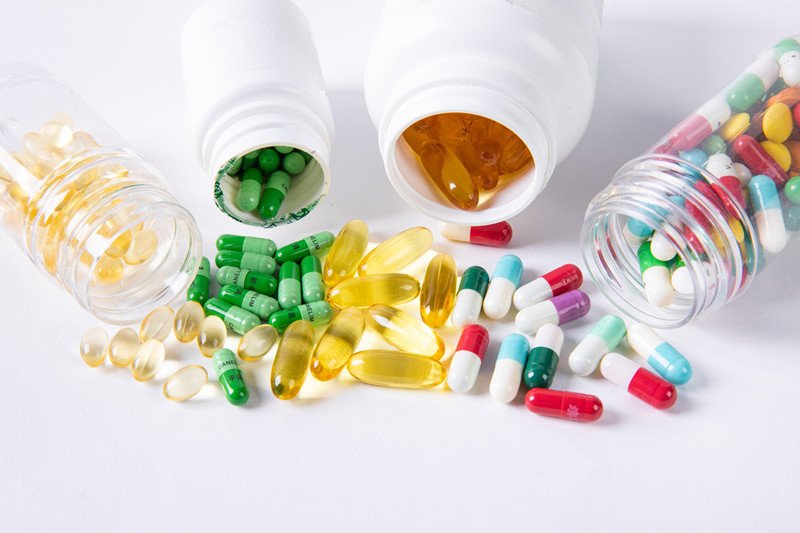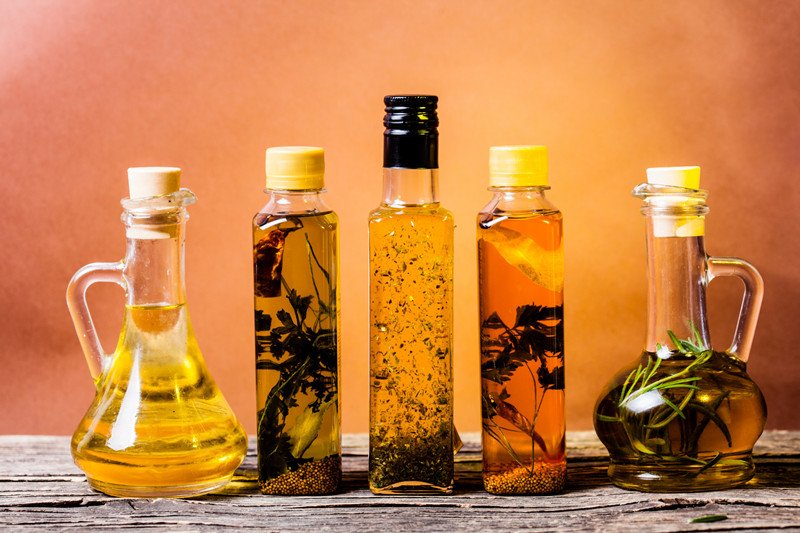Abstract: The unique physical and chemical properties and biological functions of collagen make it have high nutritional value and physiological health care functions. This article introduces in detail the health function of collagen and its degradation products and its application in the food industry.
Collagen is the main component of the extracellular matrix (ECM), and its name is derived from Greek. Collagen is a white, opaque, unbranched fibrous protein. It is mainly found in animal skin, bone, cartilage, teeth, tendons, ligaments, and blood vessels. It is an important structural protein of connective tissue and plays a role in supporting organs and protecting the body. Collagen is the most abundant protein in mammals, accounting for about 85% of collagen fiber solids, 25%-30% of total protein in the body, equivalent to 6% of body weight.
1. The nutritional value of collagen
Collagen is rich in 18 kinds of amino acids except for tryptophan, cysteine, and tyrosine, including 7 kinds of essential amino acids. Glycine in collagen accounts for about 30%; collagen also contains two unique amino acids-proline and hydroxyproline, their content is also particularly high, accounting for about 25%. Also, the content of alanine and glutamic acid is relatively high, and it also contains hydroxyproline, pyroglutamic acid, which is rare in general proteins, and hydroxylysine, which is almost absent in other proteins. Therefore, collagen is very nutritious.
Since collagen peptides are rich in amino acids, high in protein, and free of fat, they meet people’s demand for “low fat and high protein” food. And studies have shown that collagen peptides can be directly absorbed in the intestines, so regular consumption of foods rich in collagen can effectively increase the water storage capacity of skin tissue cells, enhance and maintain good skin elasticity, strengthen skin toughness, and delay the body The aging process can also strengthen the muscles and bones and strengthen the physical fitness. With the continuous improvement of people’s nutritional requirements for food, foods rich in collagen will become more and more popular. Collagen has become a good source of nutrition for maintaining youth and fitness.

2. The health function of collagen
Studies have shown that changing the additional metabolic characteristics of collagen can predict copper deficiency. Shih et al. studied the relationship between liver fibrosis and the content of collagen in the liver. The results confirmed that liver fibrosis can reduce protein content and increase rat liver collagen content. The water extract of Anoectochilus formosanus (AFE) can reduce the liver fibrosis induced by CCl4 and reduce the content of liver collagen. Collagen is also the main component of the sclera, and it is also very important for the effect of the eye. If the synthesis of collagen in the sclera decreases and the degradation increases, it will lead to myopia. Type I collagen has the strongest function on the body. Meir et al. used the computer model of type I collagen to simulate the outer matrix structure of connective tissue and used the characteristics of the outer matrix protein to predict the structure and physical and chemical composition of the tissue. Studies have shown that substituting some other groups for the glycine on the two chains of type I collagen can cause abnormal bone synthesis. It can be seen that procollagen and collagen have important value for studying the mechanism of osteoporosis, early diagnosis and treatment, judging the efficacy of drugs, and predicting the risk of fracture.
3. Application of collagen and its degradation products in the food industry
Collagen is usually white in appearance, soft in taste, light in taste, and easy to digest. The unique quality of collagen makes it a functional substance and nutrient ingredient in many foods, and it has the unparalleled superiority of other alternative materials. The application of collagen in food is relatively early, such as the early addition of pigskin to meat products as a quality improver for meat products, which can increase the tenderness and elasticity of the product. In recent years, a new development direction has appeared in the application of collagen in food.
3.1 Functional health food
3.1.1 Disease prevention food
Collagen has the function of accelerating hemoglobin and erythrocyte production, improving circulation, and helping to prevent coronary heart disease and ischemic encephalopathy. Collagen can maintain the normal function of blood vessels and is closely related to the prevention of arteriosclerosis and hypertension. Cancer cells are a foreign body to living organisms. Collagen will wrap the cancer cells and inhibit their proliferation or metastasis. It is a high-quality, high-protein protein suitable for severe patients such as diabetes and kidney disease. Besides, collagen can assist the body to excrete aluminum, reduce the accumulation of aluminum in the body, and prevent Alzheimer’s disease.

3.1.2 Calcium supplement food
The bone collagen in bone cells is the binder of hydroxyapatite, which together with hydroxyapatite constitutes the main body of the bone, and hydroxyproline is the vehicle for transporting calcium in the plasma to the bone cells, so enough intake Collagen can guarantee the normal calcium requirement to a certain extent. If there is a lack of collagen, calcium supplementation can be used to prevent osteoporosis. No amount of calcium can be improved. To supplement calcium, collagen should be supplemented first. If the human body consumes enough collagen, it will have a normal need for calcium, and it will have a normal ability to take in calcium. At present, nutritious and healthy foods for bone health that combine collagen and calcium preparations have appeared in the market.
3.1.3 Beauty and anti-aging health food
Collagen is the main component of the dermis of human skin. It forms a regular collagen fiber network structure with a small amount of elastin, which gives the skin a certain degree of elasticity and hardness and transports water to the epidermis. Hydrolyzed collagen can provide high-quality amino acid raw materials for the synthesis of human collagen, promote the synthesis of collagen, timely replenish the lost collagen in human skin, help maintain the special network structure of collagen in the skin, and improve skin moisture Condition, delay skin aging effect. At present, beauty and anti-aging health foods with collagen as the main raw material are increasingly being widely recognized.
3.1.4 Weight loss and blood lipid-lowering food
Studies have shown that collagen can reduce triglycerides and cholesterol, and can increase certain essential trace elements that are lacking in the body, thereby maintaining it within a relatively normal range. Food prepared with collagen, pectin, and wheat bran in a certain proportion is beneficial to reduce body weight and blood lipids and is an ideal food for weight loss and blood lipid reduction.
3.1.5 Other health food
Studies have shown that collagen can also reduce women’s diseases, slow down menopausal symptoms and relieve discomfort in menopausal women. Because collagen contains a large amount of glycine, it not only participates in the synthesis of collagen in the human body but is also a central nerve inhibitory transmission in brain cells. It has a calming effect on the central nervous system and has a good therapeutic effect on anxiety, neurasthenia, etc. . In addition, collagen food can inhibit the secretion of gastric acid and gastrin enzymes, reduce the pain of patients with gastric ulcers, and promote the healing of gastric ulcers.
3.2 Food additives
3.2.1 Meat product improver
Collagen powder can be directly added to meat products to affect the tenderness of the meat and the texture of the muscle after the meat is cooked. By breaking the hydrogen bonds in the collagen molecule, the original compact supercoil structure is destroyed, forming gelatin with a smaller molecule and a looser structure, which can improve the tenderness of the meat and increase its use-value. Collagen also has good dyeing properties. It can be dyed with natural food coloring to resemble muscle color, which increases the acceptability of the product.
3.2.2 Beverage and alcoholic food clarifier
According to reports in the literature, fish gelatin is used the most as a clarifier in the beverage industry, especially as the best clarifier for removing some colloidal suspensions in the wine after fermentation.
3.2.3 Dairy additives
Collagen peptides can be widely used in dairy products such as fresh milk, yogurt, and milk beverages to prevent whey precipitation and stabilize emulsification. It can also be added to milk powder, which can not only improve the nutritional value of milk powder but also enhance the health function of milk powder and improve the body’s immunity.
3.2.4 Food additives for other purposes
Collagen peptides can also be added to bread and pastries to extend the aging time, increase volume and softness. It can also be added to candies to keep the soft candies stable in shape and will not be deformed even under high pressure.
3.3 New condiments
It is reported that Japan uses animal collagen as a raw material to be hydrolyzed by collagen hydrolase to prepare and develop new condiments. This condiment has good taste performance because it is rich in taste amino acids, and it can also supplement some amino acids.

3.4 Collagen snacks
Collagen powder can be made into collagen snacks with good taste through processes such as mixing, forming, drying, and frying. And different seasonings can be added in the processing process to make collagen snacks with different flavors, which are suitable for the needs of different people.
3.5 Food packaging materials
Collagen is an ideal raw material for making artificial casings. During the heat treatment process, as water and oil evaporate and melt, collagen is almost the same as the shrinkage of meat. The casing made of collagen has the characteristics of good taste, high transparency, and a simple production process. It can also be made into an edible protein film, which is used as an inner packaging film for candies, preserved fruits, cakes, etc. It has a good appearance and is edible. It can also be made into natural plastic wrap, which is used for meat preservation, and the effect is remarkable.
3.6 Food coating materials
As a coating material, collagen can prevent food oxidation, inhibit the browning reaction, and prevent moisture absorption and agglomeration. It has the functions of preventing food deterioration, extending the shelf life, and increasing the freshness of food, and has been widely used.

